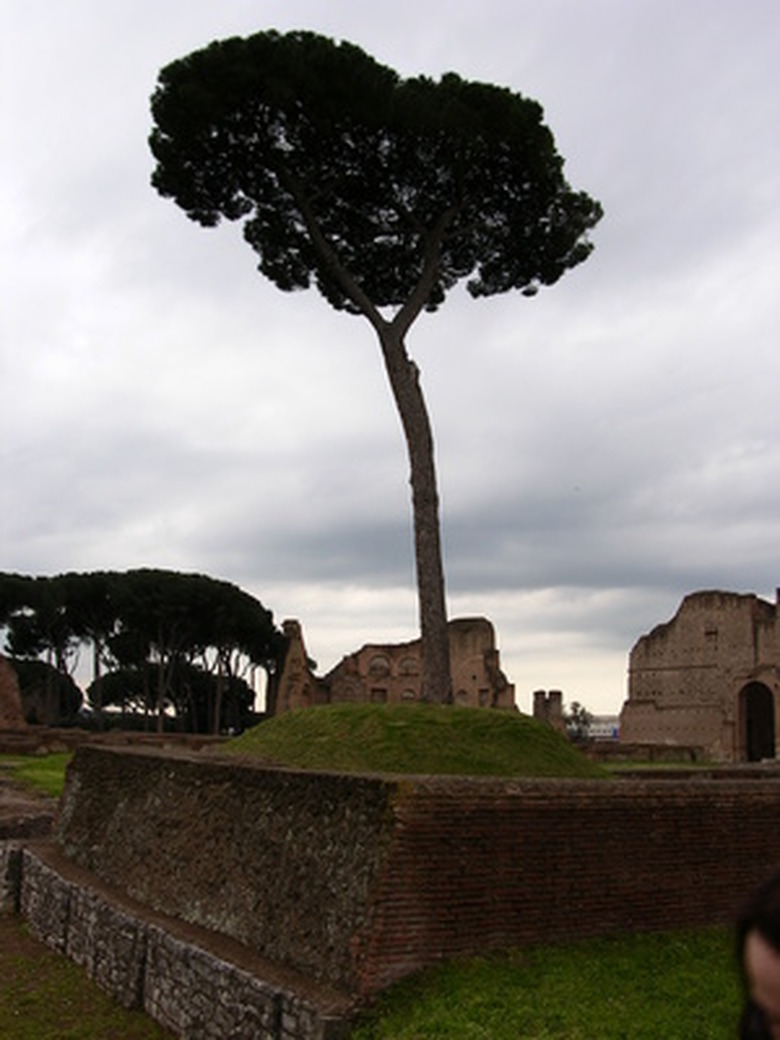Trees In Raised Beds
All the advantages of raised beds in the vegetable garden–improved drainage, ease of adding organic matter to the soil, lack of soil compaction–can also apply to trees. In areas with poorly drained soil, raised beds may be the best option for growing landscape or productive fruit trees. Trees in raised beds can also be an attractive landscape accent, effectively providing a pedestal to feature a specimen tree or grouping.
Fruit Trees
Poor soil drainage is a primary cause of mortality in fruit trees, according to the Ohio State University Extension. This is especially true in areas with clay soils or a high water table. The OSU Extension suggests that raised beds can be beneficial for fruit trees because they increase drainage, advising that the beds should be 8 to 10 inches high and 6 to 8 feet wide. Incorporating a significant amount of compost and organic matter into the raised bed fill will help ensure drainage and provide nutrient content to the tree over the long term. A thick layer of mulch on top will help moderate soil temperature, protecting the tree's roots. Alternatively, a ground cover can make for an attractive planting around the fruit trees while conserving soil moisture and protecting roots.
- All the advantages of raised beds in the vegetable garden–improved drainage, ease of adding organic matter to the soil, lack of soil compaction–can also apply to trees.
- The OSU Extension suggests that raised beds can be beneficial for fruit trees because they increase drainage, advising that the beds should be 8 to 10 inches high and 6 to 8 feet wide.
Landscape Trees
Many popular landscaping trees, including white fir (Abies concolor), beeches (Fagus spp.), and flowering dogwood (Cornus florida), cannot thrive in wet soil, according to the Purdue University Extension. When your landscape design would benefit from trees that are intolerant of saturated soil conditions, Purdue Extension suggests making a simple raised bed without sidewalls by rototilling a large bed area, then spreading 3 to 4 inches of well-drained soil and sand on top and incorporating that into the underlying ground with the rototiller. Repeat this process with an additional 3 to 4 inches of soil, then slope the edges of the bed down to meet the surface level of the surrounding ground. Plant your landscape tree within this prepared raised bed, then mulch heavily or plant a ground cover to grow down to the surrounding verge.
Tree Stock
The North Carolina State University Extension advises that one relatively new system of growing trees for nursery stock is in flexible fabric containers or bags that have been sunk into a raised bed or windrow. In this method, the young tree is placed in a fabric sack that is partially filled with topsoil and organic matter. The sack is placed in a shallow hole in the ground; dirt is then backfilled and piled up around the sack and left in place until the tree has grown to the desired size. The surrounding dirt can then be dug off, and the tree transported to its sale or planting location with the fabric sack intact. The bag is removed at the point of permanent planting. This method allows for easier transportation of the young tree with minimal trauma or loss of roots compared to other methods of digging nursery stock, such as the traditional ball-and-burlap or bare-root methods.
- Many popular landscaping trees, including white fir (Abies concolor), beeches (Fagus spp.
- ), The North Carolina State University Extension advises that one relatively new system of growing trees for nursery stock is in flexible fabric containers or bags that have been sunk into a raised bed or windrow.
